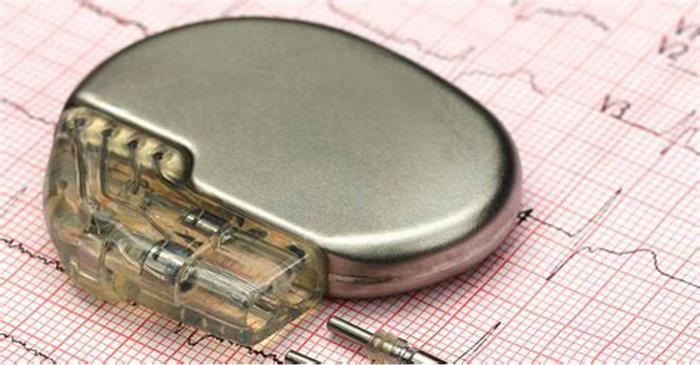The battery life of a pacemaker is a crucial aspect of its overall function and longevity. As a device that helps regulate the heart's rhythm, the pacemaker relies on a power source to deliver electrical impulses. Over time, the battery powering the pacemaker will begin to deplete, which can affect its ability to maintain proper heart function. Understanding how pacemaker batteries work, how long they last, and the signs that indicate the need for a replacement is essential for patients and healthcare providers to ensure continuous and effective treatment.
What Is a Pacemaker Battery and How Does It Work?
A pacemaker battery is a vital component that powers the electrical pulses delivered by the pacemaker to regulate heartbeats. The battery is typically a long-lasting, high-performance component designed to endure years of use. It provides the necessary energy for the pacemaker's electronic circuitry to function, allowing it to monitor the heart’s rhythm and deliver impulses when needed. Pacemaker batteries are built to last for several years, but their lifespan can vary depending on factors such as the type of pacemaker, its settings, and how often it is activated.
How Long Does a Pacemaker Battery Last?
On average, a pacemaker battery lasts between 5 to 15 years, depending on several factors. Some pacemakers, especially those used for more complex heart conditions, may experience a faster battery drain, while simpler models can last longer. Factors that influence battery life include the frequency of pacing required, the device's settings, and the patient's overall heart condition. Pacemaker manufacturers design these batteries to be efficient, but it’s important for patients to undergo regular checkups to monitor battery status and anticipate replacement before the battery is fully drained.

Factors That Influence Pacemaker Battery Life
Several factors can affect the lifespan of a pacemaker battery. One of the most significant is the pacing needs of the patient. If the pacemaker is required to deliver frequent electrical impulses, it will use more energy, causing the battery to deplete more quickly. The settings of the pacemaker, such as pacing mode and pulse width, also influence battery life more complex settings can reduce battery longevity. Additionally, certain medical conditions or changes in the patient's heart function may cause the pacemaker to work harder, thus shortening battery life. Regular check-ups allow healthcare providers to adjust settings to optimize battery usage.
Signs That Indicate the Pacemaker Battery is Running Low
As the pacemaker battery nears the end of its life, patients may not immediately notice any dramatic symptoms, but there are some indicators to be aware of. The most obvious sign is the device alerting the patient through a remote monitoring system or during a follow-up visit that the battery is running low. In some cases, patients may experience irregular heartbeats, dizziness, or fatigue, which may indicate that the pacemaker is no longer functioning properly due to low battery power. It’s essential to maintain regular appointments with a healthcare provider for routine checks to ensure the pacemaker is still working optimally.
How Pacemaker Battery Life Is Monitored
Pacemaker battery life is regularly monitored through follow-up visits with the healthcare provider. Many pacemakers have built-in monitoring systems that allow doctors to check battery status remotely, minimizing the need for frequent in-person visits. During these checkups, a healthcare professional will assess the battery's remaining life, the device's performance, and make any necessary adjustments to the pacemaker's settings. The battery life is usually measured in months or years, and when the battery is close to depletion, the healthcare provider will schedule a pacemaker replacement procedure.
The Importance of Regular Checkups for Battery Monitoring
Regular checkups are crucial to ensure the pacemaker continues to function properly and the battery remains sufficient. Since pacemaker batteries generally last several years, most patients are advised to visit their healthcare provider at least once a year to monitor the battery's condition. During these appointments, the provider will also assess the pacemaker’s performance, adjust settings if necessary, and address any concerns. Regular monitoring helps detect any issues early, preventing complications and ensuring that the patient’s heart condition is managed effectively with minimal disruption.
What Happens When the Pacemaker Battery Runs Out?
When the pacemaker battery runs out, the device stops functioning as intended, which can lead to a loss of rhythm control. This may cause symptoms like dizziness, fatigue, fainting, or irregular heartbeats. It is essential to replace the battery before it completely depletes to avoid these issues. Most pacemakers have an alert system that notifies patients and doctors when the battery is low, allowing for timely intervention.
The Process of Pacemaker Battery Replacement
Pacemaker battery replacement involves a minor surgical procedure. The old pacemaker is removed, and a new one is implanted, or the battery is replaced if the device is still functional. The procedure is usually done under local anesthesia, and patients typically remain awake but relaxed. It requires a few hours in the hospital, and patients can often return home the same day.
How Pacemaker Battery Replacement Is Performed
During the procedure, the surgeon makes an incision near the original pacemaker site. The old pacemaker is removed, and the leads (wires) connected to the heart are checked for proper function. A new pacemaker or battery is then implanted, ensuring all connections are secure. The incision is closed, and the device's function is tested before the procedure is complete.
Risks Associated with Pacemaker Battery Replacement
Although pacemaker battery replacement is generally safe, it carries some risks, such as infection at the incision site, bleeding, bruising, lead dislodgement, or damage to the surrounding tissue. There may also be a small risk of an allergic reaction to anesthesia or the device materials. These risks are minimized by having a skilled surgical team perform the procedure.

New Advances in Pacemaker Battery Technology
Recent advances in pacemaker battery technology focus on increasing the longevity of the devices. Newer batteries and energy-efficient systems allow pacemakers to last longer, reducing the frequency of replacements. Additionally, advancements in battery design and energy management systems contribute to more reliable and efficient pacemaker performance.
How Often Should Pacemaker Battery Replacement Be Expected?
The average pacemaker battery lasts between 5 to 15 years, depending on the type of pacemaker, usage, and the individual’s heart condition. Regular follow-ups and monitoring can help predict when the battery will need replacement, allowing for timely intervention. A typical check-up includes testing the battery's charge and estimating how much longer it will function.
How to Prepare for Pacemaker Battery Replacement Surgery
Preparation for pacemaker battery replacement generally involves a pre-operative assessment, including blood tests, imaging, and a physical exam. Patients should follow their doctor’s instructions, such as fasting before the procedure and arranging for someone to drive them home afterward. It is important to discuss any medications, allergies, or health concerns with the healthcare provider ahead of time.
Understanding the Role of the Pacemaker in Heart Function During Battery Replacement
During pacemaker battery replacement, the old device is typically turned off, and the new one is activated before any disconnection occurs. This ensures continuous heart rhythm support throughout the procedure. The leads remain in place to maintain electrical signals to the heart. The surgery is carefully timed to prevent any disruption in the pacemaker’s support of the heart’s function.
Post-Replacement Care: What to Expect After Battery Change
After pacemaker battery replacement, patients will need to follow specific care instructions, such as avoiding heavy lifting or strenuous activities for several weeks. The incision site should be kept clean and dry, and the patient may need to return for follow-up appointments to check the pacemaker’s function and ensure proper healing. Minor discomfort or swelling at the site is normal but should be monitored for signs of infection.
What Happens if Pacemaker Battery Replacement Is Delayed?
If pacemaker battery replacement is delayed, the pacemaker may stop functioning, which can lead to serious heart rhythm disturbances. Symptoms such as dizziness, fainting, or shortness of breath may occur if the pacemaker fails to regulate the heartbeat. Delays can be dangerous, so it is important to replace the battery as soon as it is necessary.
Pacemaker Battery Replacement and Insurance Coverage
Most insurance plans cover pacemaker battery replacement as part of the overall pacemaker therapy. However, coverage may vary depending on the specific insurance policy and the medical necessity of the procedure. It is important to verify coverage and inquire about potential out-of-pocket costs with the insurance provider prior to the procedure.
The Cost of Pacemaker Battery Replacement: What to Know
The cost of pacemaker battery replacement can vary based on factors like the type of pacemaker, healthcare provider, and location. On average, the cost ranges from a few thousand dollars to over $10,000, including the procedure, hospital stay, and follow-up care. Patients should consult with their healthcare provider and insurance company for an accurate estimate of costs.
How to Recognize Complications After Pacemaker Implantation
Learn how to recognize complications after pacemaker implantation. This section provides insights into potential issues such as infections, battery problems, or improper pacemaker function and how to address them promptly.
The Role of Medications in Managing Pacemaker Patients
Discover the role of medications in managing pacemaker patients. This section outlines the types of medications that help manage heart rhythms and support the health of pacemaker patients post-surgery.
Conclusion: Maintaining Pacemaker Function with Proper Battery Care
Proper management of pacemaker battery health is essential to maintaining its function and ensuring that patients continue to receive the necessary heart rhythm support. Regular check-ups, timely battery replacement, and awareness of potential issues can prevent complications and contribute to a healthy, active life.
Best Pacemaker Implantation Surgery in India
The Best Pacemaker Implantation Surgery in India offers a life-saving solution for patients with irregular heartbeats, helping to regulate heart rhythm and improve overall health.
Best Pacemaker Implantation Surgeons in India
The Best Pacemaker Implantation Surgeons in India are experienced in cardiac device implantation, delivering personalized care to help patients manage heart rhythm issues effectively.
FAQ
How do I know when my pacemaker battery is low?
Pacemakers typically have built-in systems that alert doctors and patients when the battery is running low, often well before it completely depletes.
How long does the pacemaker battery last before needing a replacement?
Pacemaker batteries usually last between 5 to 15 years, depending on the type and frequency of use.
What is the procedure for pacemaker battery replacement?
Pacemaker battery replacement involves a minor surgical procedure to remove the old device and implant a new one, with a focus on ensuring proper device function.
Are there any risks involved in pacemaker battery replacement?
While generally safe, risks include infection, bleeding, lead dislodgement, and damage to surrounding tissues.
How often do I need to get my pacemaker battery checked?
Regular check-ups are necessary to monitor battery life, typically every 6 to 12 months, to ensure the pacemaker is functioning properly.